-
 Bitcoin
Bitcoin $118300
-1.72% -
 Ethereum
Ethereum $3591
-0.69% -
 XRP
XRP $3.478
-3.53% -
 Tether USDt
Tether USDt $1.001
-0.01% -
 BNB
BNB $737.7
-0.54% -
 Solana
Solana $177.3
-2.40% -
 USDC
USDC $0.9999
-0.01% -
 Dogecoin
Dogecoin $0.2538
7.04% -
 TRON
TRON $0.3256
-0.85% -
 Cardano
Cardano $0.8332
-3.48% -
 Hyperliquid
Hyperliquid $44.80
-3.30% -
 Stellar
Stellar $0.4672
-6.09% -
 Sui
Sui $3.828
-5.98% -
 Chainlink
Chainlink $18.15
-3.41% -
 Hedera
Hedera $0.2655
-7.16% -
 Bitcoin Cash
Bitcoin Cash $517.5
-0.64% -
 Avalanche
Avalanche $23.89
-2.37% -
 Shiba Inu
Shiba Inu $0.00001519
-0.45% -
 UNUS SED LEO
UNUS SED LEO $8.973
0.13% -
 Toncoin
Toncoin $3.211
-2.54% -
 Litecoin
Litecoin $103.5
-3.58% -
 Polkadot
Polkadot $4.313
-3.90% -
 Uniswap
Uniswap $10.31
0.67% -
 Monero
Monero $325.4
-2.88% -
 Bitget Token
Bitget Token $5.049
3.51% -
 Ethena USDe
Ethena USDe $1.002
0.04% -
 Pepe
Pepe $0.00001346
-2.96% -
 Dai
Dai $0.9999
-0.02% -
 Aave
Aave $322.1
-2.93% -
 Bittensor
Bittensor $411.9
-4.70%
What is an NFT and how does it relate to blockchain?
NFTs are unique digital assets that represent ownership of items like art, music, or virtual goods, verified securely on blockchain technology.
Jul 19, 2025 at 04:15 pm
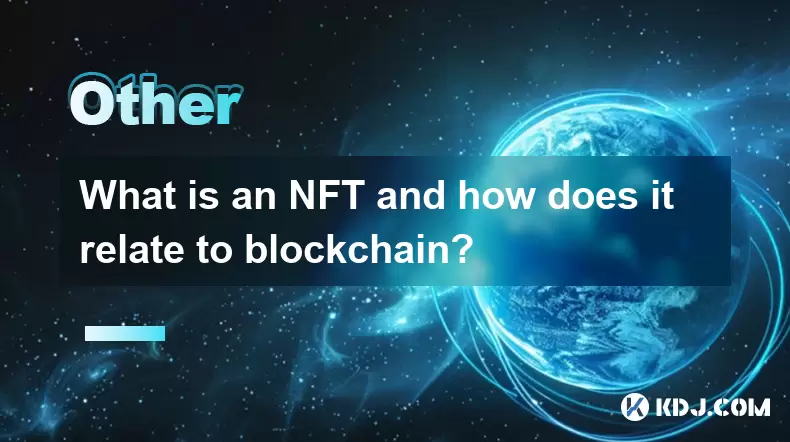
Understanding the Concept of NFTs
An NFT, or Non-Fungible Token, is a type of digital asset that represents ownership of a unique item or piece of content. Unlike cryptocurrencies such as Bitcoin or Ethereum, which are fungible and can be exchanged on a one-to-one basis, NFTs are unique and cannot be exchanged equally. Each NFT contains identifying information recorded in smart contracts, typically on the Ethereum blockchain, which makes them distinct from one another.
The key characteristic of NFTs is their non-fungibility, meaning that no two NFTs are the same. This uniqueness allows NFTs to represent a wide variety of digital and physical assets, including digital art, music, videos, and even virtual real estate. Because of this, NFTs have become a popular way to buy, sell, and trade digital collectibles.
The Role of Blockchain in NFTs
Blockchain technology is the foundation of NFTs, providing the infrastructure that enables the creation, verification, and transfer of these unique tokens. A blockchain is a decentralized digital ledger that records transactions across a network of computers, ensuring transparency and security. When an NFT is created, or "minted," it is recorded on the blockchain, and this record cannot be altered or deleted.
Smart contracts are a crucial component of NFTs on the blockchain, as they define the rules and conditions under which the NFT operates. These self-executing contracts automatically enforce agreements between buyers and sellers, such as transferring ownership or paying royalties to the original creator when the NFT is resold. The use of blockchain ensures that NFT ownership is verifiable and tamper-proof, which is essential for establishing trust in the digital marketplace.
How NFTs Are Created and Traded
The process of creating an NFT begins with minting, which involves converting a digital file into a blockchain-based token. This is typically done through an NFT marketplace, where creators can upload their content and connect it to a smart contract. Minting an NFT requires paying a fee, known as gas, to the blockchain network, which covers the computational resources needed to process the transaction.
Once an NFT is minted, it can be bought, sold, or traded on NFT marketplaces such as OpenSea, Rarible, or Foundation. These platforms allow users to browse available NFTs, place bids, or purchase them outright using cryptocurrency. Each transaction is recorded on the blockchain, ensuring that the history of ownership is transparent and accessible to anyone.
To participate in NFT trading, users need a digital wallet that supports blockchain interactions, such as MetaMask or Trust Wallet. These wallets store the user's private keys and allow them to sign transactions securely. Connecting a wallet to an NFT marketplace is a necessary step before buying or selling NFTs, and users must also have sufficient cryptocurrency to cover transaction fees and purchases.
Use Cases of NFTs Beyond Digital Art
While digital art is one of the most well-known applications of NFTs, their utility extends far beyond that. NFTs are being used in gaming to represent in-game items, such as weapons, skins, or characters, which players can own and trade outside of the game environment. This introduces a new level of ownership and value to virtual assets.
In the music industry, artists are using NFTs to sell exclusive content, concert tickets, or limited editions of their work directly to fans. This allows musicians to bypass traditional distribution channels and retain more control over their intellectual property. NFTs also enable artists to earn royalties automatically when their work is resold, thanks to the programmable nature of smart contracts.
Real estate and luxury goods are other emerging sectors where NFTs are gaining traction. By tokenizing physical assets, NFTs can represent ownership of real-world items like property or high-end fashion. This opens up new possibilities for fractional ownership and streamlined transactions, as blockchain-based NFTs can simplify the process of proving ownership and transferring assets.
Challenges and Considerations in the NFT Space
Despite their growing popularity, NFTs come with several challenges. One of the primary concerns is environmental impact, as the process of minting and trading NFTs often requires significant energy consumption, especially on proof-of-work blockchains like Ethereum. Efforts are underway to transition to more energy-efficient consensus mechanisms, such as proof-of-stake, to address this issue.
Another challenge is the potential for fraud and scams in the NFT market. Since anyone can create and sell an NFT, there have been instances of unauthorized use of intellectual property or misleading claims about ownership. Buyers must exercise caution and verify the authenticity of NFTs before making purchases, using tools like blockchain explorers to check transaction history and ownership records.
Regulatory uncertainty is also a factor in the NFT space, as governments and financial institutions are still determining how to classify and regulate these digital assets. The legal status of NFTs varies by jurisdiction, and users should be aware of the laws and tax implications in their region before engaging in NFT transactions.
Frequently Asked Questions
Can NFTs be copied or stolen?
While the digital file associated with an NFT can be copied, the ownership of the NFT itself is recorded on the blockchain and cannot be duplicated. However, there have been cases of people minting NFTs of content they don't own, which can lead to disputes over intellectual property.
Do I need cryptocurrency to buy NFTs?
Yes, most NFT transactions require payment in cryptocurrency, typically Ethereum (ETH). Users need a compatible wallet and some crypto to cover both the purchase price and transaction fees.
Are NFTs only for digital art?
No, NFTs can represent a wide range of assets, including music, videos, virtual land, and even physical items. Their application continues to expand into various industries beyond the art world.
How do I verify the authenticity of an NFT?
You can check the blockchain record of an NFT using a blockchain explorer or the tools provided by the NFT marketplace. This allows you to confirm the creator, owner, and transaction history of the NFT.
Disclaimer:info@kdj.com
The information provided is not trading advice. kdj.com does not assume any responsibility for any investments made based on the information provided in this article. Cryptocurrencies are highly volatile and it is highly recommended that you invest with caution after thorough research!
If you believe that the content used on this website infringes your copyright, please contact us immediately (info@kdj.com) and we will delete it promptly.
- XRP Mining for Passive Wealth: Is It the 2025 Crypto Gold Rush?
- 2025-07-19 22:50:12
- Aptos Price Analysis: Bullish Momentum Building?
- 2025-07-19 23:30:12
- Bitcoin, XRP, XYZVerse: Crypto's Highs, Community Dreams, and Meme Coin Mania
- 2025-07-19 23:30:12
- India's Wealthy Embrace Crypto: A New Era of Digital Investment
- 2025-07-19 22:30:12
- XRPL's TVL Surge: DeXRP's Ambitious DEX and SUI's Rise
- 2025-07-19 22:50:12
- ARB Price Rally: Breaking Free from the Descending Channel
- 2025-07-19 23:50:12
Related knowledge
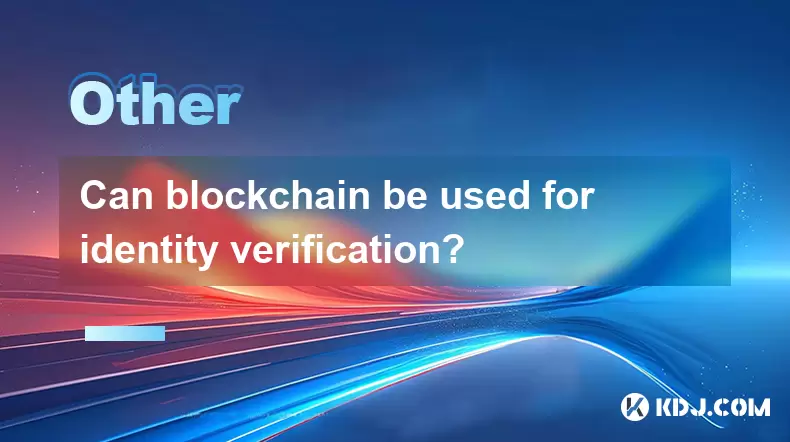
Can blockchain be used for identity verification?
Jul 18,2025 at 02:14pm
Understanding Identity Verification in the Digital AgeIn the modern digital landscape, identity verification has become a critical component for ensur...
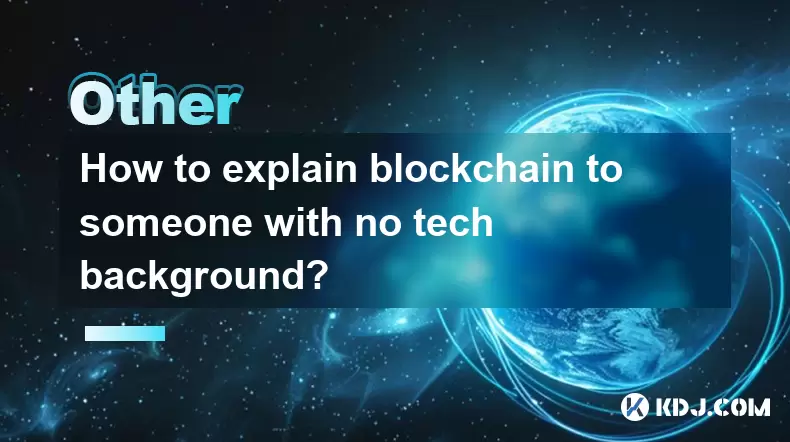
How to explain blockchain to someone with no tech background?
Jul 18,2025 at 11:08pm
Understanding the Basics of BlockchainTo explain blockchain to someone with no tech background, it's essential to start with simple analogies and avoi...
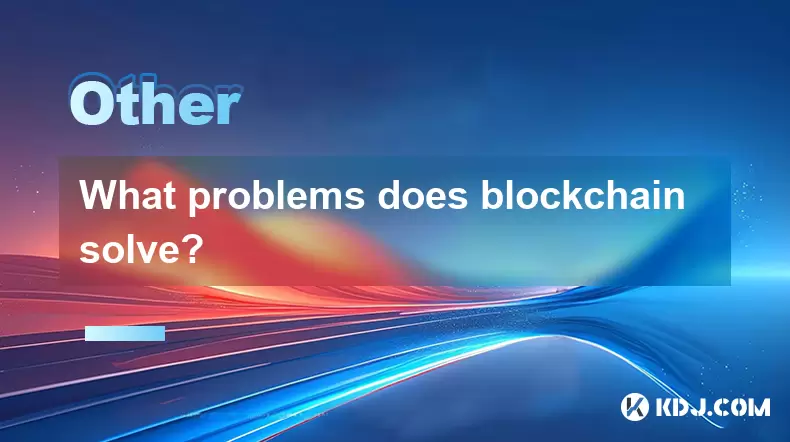
What problems does blockchain solve?
Jul 19,2025 at 12:01pm
Decentralization and Trustless SystemsBlockchain technology fundamentally addresses the issue of centralized control and trust in traditional systems....
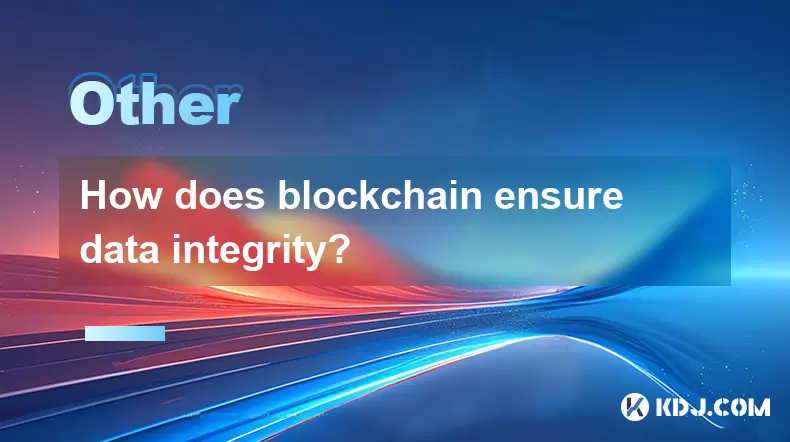
How does blockchain ensure data integrity?
Jul 19,2025 at 08:14pm
Understanding Data Integrity in BlockchainData integrity refers to the accuracy and consistency of data throughout its lifecycle. In the context of bl...
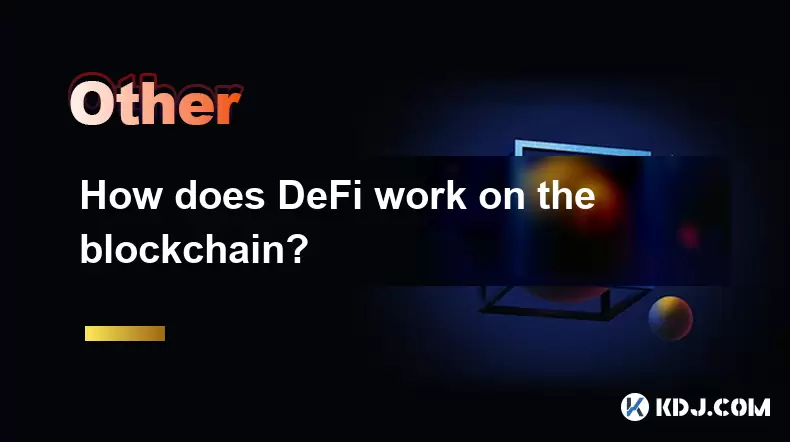
How does DeFi work on the blockchain?
Jul 19,2025 at 10:42pm
Understanding DeFi and Its Role in the Blockchain EcosystemDeFi, or Decentralized Finance, refers to a financial system built on blockchain technology...

What is an NFT and how does it relate to blockchain?
Jul 19,2025 at 04:15pm
Understanding the Concept of NFTsAn NFT, or Non-Fungible Token, is a type of digital asset that represents ownership of a unique item or piece of cont...

Can blockchain be used for identity verification?
Jul 18,2025 at 02:14pm
Understanding Identity Verification in the Digital AgeIn the modern digital landscape, identity verification has become a critical component for ensur...

How to explain blockchain to someone with no tech background?
Jul 18,2025 at 11:08pm
Understanding the Basics of BlockchainTo explain blockchain to someone with no tech background, it's essential to start with simple analogies and avoi...

What problems does blockchain solve?
Jul 19,2025 at 12:01pm
Decentralization and Trustless SystemsBlockchain technology fundamentally addresses the issue of centralized control and trust in traditional systems....

How does blockchain ensure data integrity?
Jul 19,2025 at 08:14pm
Understanding Data Integrity in BlockchainData integrity refers to the accuracy and consistency of data throughout its lifecycle. In the context of bl...

How does DeFi work on the blockchain?
Jul 19,2025 at 10:42pm
Understanding DeFi and Its Role in the Blockchain EcosystemDeFi, or Decentralized Finance, refers to a financial system built on blockchain technology...

What is an NFT and how does it relate to blockchain?
Jul 19,2025 at 04:15pm
Understanding the Concept of NFTsAn NFT, or Non-Fungible Token, is a type of digital asset that represents ownership of a unique item or piece of cont...
See all articles

























































































